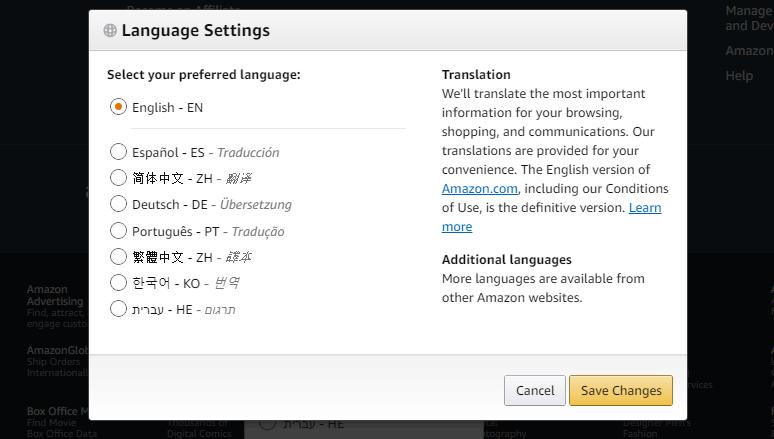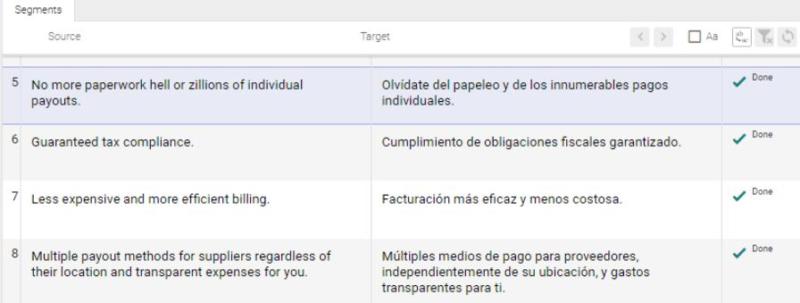- Dec 30, 2019
 0
0- by A2 Marketing Team
Many popular websites have audiences spread out across the globe. However, not everyone speaks English. That means English-based websites often need to translate their content into more languages if they want all of their visitors to have a good experience. The question is, should you do the same for your own website?
Adding even a single additional language to your site can significantly increase its audience. Online stores, for example, can benefit from translating product and checkout pages to encourage international sales. That’s just one example, however, and there are plenty of other types of sites that can reap the rewards of going multilingual.
In this article, we’ll discuss whether you should consider adding more languages to your website. Then we’ll go over three of the most popular approaches you can use, and discuss their pros and cons. Let’s get to it!
Should You Add More Languages to Your Website?
Offering your website in multiple languages is a great way to open it up to new audiences. Over 379 million people in the world are native English speakers. However, Spanish beats that number by about 100 million, and Chinese crushes both languages combined, with 1.3 billion native speakers.
The point is that English is an excellent start, but it’s far from the only language in the world. For a lot of websites, it makes sense to target as many regions of the globe as possible. The two best examples include:
- E-commerce websites. If you can ship products internationally, you’ll want to think about expanding your business into global markets. To do that, you need to speak potential customers’ languages.
- Online service sites. If you provide a service over the web, you don’t even need to worry about shipping. That means it’s only logical to expand your audience as much as possible by adding more languages to your site.
As an example, consider Amazon. The e-commerce giant is well on its way to world domination, offering its famous store in dozens of languages:

To be fair, Amazon is an outlier even in the ecommerce field. If you run a small website that’s still in its infancy, adding more languages may be spreading your efforts a bit thin. The smart move would be to grow your website until it’s making a reliable income, and then consider making it multilingual.
In addition, keep in mind that translating an entire website can be complicated. The more content you have, the more time and money it will likely take. That’s why you don’t see a lot of big multilingual blogs, since they’d be too impractical to translate. It’s also why the best approach is to start by expanding into one or two new languages, rather than trying to offer your site in a dozen different tongues.
3 Ways to Translate Your Website
If you’re interested in creating a multilingual site, you should understand what methods are available to you. Let’s go over the three most popular options at your disposal.
1. Translate Your Website Manually
This first approach involves translating all of the content and elements on your website personally. If your site is very small (in terms of both pages and content), doing all the work yourself isn’t out of the question.
Moreover, if you decide to go this way you can:
- Save money on professional translation services.
- Have full control over the translation process.
- Proceed at your own pace.
The problem is that, unless your website only has a couple of pages, the work involved may be too much for one person (or even a small team) to handle. It’s also not entirely accurate to say that this approach is free. After all, if you’re spending dozens of hours translating content, that’s time you’re not getting paid for.
Plus, you’re naturally limited by the number of languages you know. If you don’t speak a language fluently, you’ll likely make a lot of mistakes, which can make the end result look unprofessional. That makes translating your site personally only a viable option if you’re multilingual yourself.
2. Hire Professional Translation Services
Hiring professional services is the most straightforward approach to translating your website. However, it’s also the most expensive option.
Professional translation does have plenty of advantages, including:
- Using professionals is the best way to get high-quality translations.
- You don’t need to do any of the work yourself (beyond paying translation invoices).
- You can get started any time you want.
Of course, it’s worth knowing that professional translators cost (on average) about $0.215 per word. For 5,000 words of content, that would cost you around $1,075. In other words, you’ll need a significant budget if you want to hire professionals to translate your website.
The more content your site has, the bigger that budget needs to be. You can consider hiring cheaper online translators, but at that point you risk losing out on quality, which defeats the point of hiring experts in the first place. If you can afford to hire top talent, however, this is an approach that could earn itself out for ecommerce sites.
3. Use Machine Translation
You’re probably already familiar with the concept of machine translation. This approach uses software to translate content automatically from one language into another. The most famous example would be Google Translate:

The upsides of machine translation include:
- There are a lot of free software options.
- You can instantly translate massive amounts of text.
- You get access to almost every language in the world.
That likely sounds very appealing. If you’ve ever used machine translation tools in the past, however, you know that they’re far from perfect. At this point, machine translation is not reliable enough to translate vast amounts of content accurately. Most software makes plenty of mistakes, which means it can butcher your website’s content.
If you want to roll the dice, however, there are a lot of ways you can implement machine translation on your website. The easiest (yet most unpractical) approach would be to copy content into a translation tool. If you’re using a platform such as WordPress, you can often skip that step using plugins or other add-ons.
Fortunately, machine translation is getting better all the time. Plus, a new development that’s been gaining traction is using machine translation in combination with professional services. This is often called computer-assisted translation.
In general, this approach involves first using software to automatically translate a piece of content. Then, an expert translator reviews the results, making changes and corrections as needed:

Computer-assisted translation services are an excellent middle ground. They’re fast and accurate, and a lot cheaper than having a professional translate your content from scratch. All they have to do is review the machine’s translations, which saves them (and you) a lot of time.
Conclusion
Adding more languages to your website can be a sound business decision. However, it’s important to understand that the process can take a lot of time and money. Therefore, it’s a good idea to consider whether your site has the earning potential to make that investment worthwhile.
If you are interested in making your site multilingual, there are three main ways to get the job done:
- Do the work yourself: This takes the most time, but it’s a free approach, and it enables you to focus on the languages you know.
- Hire translation services: This approach is expensive, but it guarantees high-quality translations into any languages you want.
- Use machine translation: Although this method isn’t reliable enough for content-heavy websites, it’s highly scalable and cheap.
Do you think your website could benefit from additional languages? Tell us why in the comments section below!
Image credit: Pixabay.












